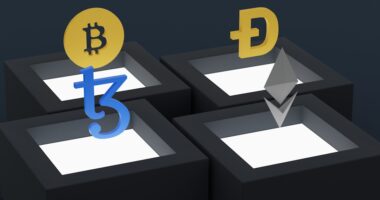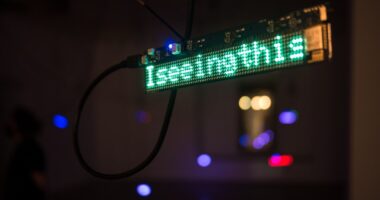Non-fungible tokens (NFTs) are unique digital assets that represent ownership or authenticity of specific digital items or content. Unlike fungible cryptocurrencies such as Bitcoin or Ethereum, which can be exchanged on a one-to-one basis, NFTs are non-interchangeable and possess distinct characteristics. NFTs utilize blockchain technology to ensure their uniqueness and prevent replication.
This technology provides a transparent and immutable record of ownership, making NFTs particularly suitable for verifying the authenticity and provenance of digital assets. The emergence of NFTs has created new opportunities for creators and collectors in the digital realm. These tokens enable the buying, selling, and trading of unique digital assets with unprecedented security and authenticity.
NFTs have applications in various fields, including digital art, music, videos, and even social media content. The growing popularity of NFTs stems from their ability to transform the way digital assets are bought, sold, and owned. As the NFT market expands, it is crucial for both creators and consumers to comprehend the distinctive properties and potential applications of these digital tokens.
Key Takeaways
- NFTs are unique digital assets that represent ownership of a specific item or piece of content on the blockchain.
- Unlike traditional cryptocurrencies, NFTs are non-fungible, meaning they cannot be exchanged on a one-to-one basis.
- NFTs have unique properties such as indivisibility, verifiability, and scarcity, making them ideal for digital art, collectibles, and gaming items.
- Creating and selling NFTs involves minting the digital asset, setting its parameters, and listing it on a marketplace for potential buyers.
- NFTs have gained significant traction in the art and entertainment industries, with artists and creators leveraging them for new revenue streams and audience engagement.
How NFTs Differ from Traditional Cryptocurrencies
Non-Fungibility vs. Fungibility
The most significant difference between NFTs and traditional digital currencies is that NFTs are non-fungible, meaning each token is unique and cannot be exchanged on a like-for-like basis. In contrast, cryptocurrencies like Bitcoin are fungible, meaning one unit of the currency is interchangeable with another unit of the same value.
Different Use Cases
Another key difference is that NFTs are typically used to represent ownership or proof of authenticity of a specific digital asset, such as artwork, videos, music, or collectibles. In contrast, traditional cryptocurrencies are used as a medium of exchange or store of value.
Understanding the Differences
It is essential for investors and consumers to understand these differences when considering the potential benefits and risks of investing in NFTs. While both NFTs and cryptocurrencies have the potential to revolutionize the way we buy, sell, and own digital assets, it is crucial to recognize the unique properties and use cases of each type of digital asset.
The Unique Properties of NFTs and Their Use Cases

NFTs possess several unique properties that set them apart from traditional digital assets and give them a wide range of potential use cases. One of the most significant properties of NFTs is their non-fungibility, which means each token is unique and cannot be exchanged on a like-for-like basis. This makes NFTs ideal for proving ownership and authenticity of digital assets, as each token represents a specific item or piece of content.
Another key property of NFTs is their ability to be programmed with smart contracts, which can automate certain aspects of the ownership and transfer process. For example, a smart contract can be used to ensure that the original creator receives a percentage of the sales every time the NFT is resold, providing a way for creators to continue to benefit from the value of their work even after it has been sold. The unique properties of NFTs open up a wide range of potential use cases across various industries, including art, music, gaming, collectibles, and more.
For example, artists can use NFTs to sell digital artwork directly to collectors, musicians can use NFTs to sell exclusive music or concert tickets, and gamers can use NFTs to buy, sell, and trade in-game items. As the market for NFTs continues to grow, we can expect to see even more innovative use cases emerge for these unique digital assets.
Exploring the Process of Creating and Selling NFTs
The process of creating and selling NFTs involves several key steps, from minting the token to listing it on a marketplace for sale. The first step in creating an NFT is to choose a blockchain platform that supports NFT creation, such as Ethereum or Binance Smart Chain. Once a platform has been chosen, the creator can then use a specialized marketplace or platform to mint their digital asset into an NFT.
After minting the NFT, the creator can then list it for sale on a marketplace or auction platform that supports NFT trading. When listing the NFT for sale, the creator can set a price or choose to auction it off to the highest bidder. Once the NFT has been sold, the ownership and transfer of the token are recorded on the blockchain, providing a transparent and immutable record of ownership.
The process of creating and selling NFTs has opened up new opportunities for creators to monetize their digital assets directly with collectors and fans. As the market for NFTs continues to grow, we can expect to see even more platforms and marketplaces emerge to support the creation and sale of these unique digital tokens.
The Rise of NFTs in the Art and Entertainment Industries
NFTs have gained significant traction in the art and entertainment industries, providing new opportunities for artists, musicians, filmmakers, and other creators to monetize their work in the digital space. One of the most notable examples of this is the sale of digital artwork as NFTs, which has garnered attention from collectors and art enthusiasts around the world. Artists can now sell their digital artwork directly to collectors as NFTs, bypassing traditional galleries and auction houses.
In addition to art, NFTs have also made an impact in the music industry, with musicians using NFTs to sell exclusive music or concert tickets directly to fans. This has opened up new revenue streams for artists and provided fans with unique opportunities to support their favorite musicians while gaining access to exclusive content. The rise of NFTs in the art and entertainment industries has sparked a wave of innovation and creativity in how digital assets are bought, sold, and owned.
As more creators and consumers embrace NFTs as a way to engage with digital content, we can expect to see even more groundbreaking developments in these industries.
Potential Benefits and Risks of Investing in NFTs

Supporting Artists and Gaining Unique Content
By purchasing an NFT directly from the creator, collectors can support artists and creators while gaining ownership or access to unique digital content.
Risks Associated with NFT Investing
However, investing in NFTs also comes with certain risks that investors should be aware of. One risk is the potential for volatility in the value of NFTs, as prices can fluctuate based on market demand and other factors. Additionally, there is also the risk of fraud or counterfeit NFTs, as not all platforms or marketplaces have robust verification processes in place.
Approaching NFT Investing with Caution
It is important for investors to carefully consider these potential benefits and risks before investing in NFTs. While there are opportunities for collectors to support artists directly and potentially profit from the appreciation in value of digital assets, it is crucial to approach investing in NFTs with caution and due diligence.
NFTs and the Future of Digital Ownership and Collectibles
The rise of NFTs has sparked discussions about the future of digital ownership and collectibles, as these unique digital tokens have opened up new possibilities for buying, selling, and owning digital assets. With NFTs, creators can now sell their digital artwork directly to collectors as unique tokens on the blockchain, providing a level of authenticity and ownership that was previously impossible to achieve in the digital space. In addition to art and collectibles, NFTs have also made an impact in other industries such as gaming, where players can buy, sell, and trade in-game items as NFTs.
This has opened up new opportunities for gamers to own and monetize their in-game assets while providing a level of security and authenticity that was previously lacking in virtual economies. As the market for NFTs continues to grow, we can expect to see even more innovative developments in how digital assets are bought, sold, and owned. The rise of NFTs has sparked a wave of creativity and innovation in various industries, paving the way for new opportunities for creators and collectors alike.
If you’re interested in learning more about the potential career opportunities in the NFT space, check out this article on nft-jobs.com. It provides valuable insights into the growing job market within the NFT industry and offers guidance for those looking to break into this exciting field.
FAQs
What is a NFT?
A NFT, or non-fungible token, is a digital asset that represents ownership or proof of authenticity of a unique item or piece of content, such as artwork, music, videos, or collectibles, using blockchain technology.
How does a NFT work?
NFTs are created, bought, and sold using blockchain technology, which ensures the uniqueness and ownership of the digital asset. Each NFT has a unique digital signature that cannot be replicated, making it distinct from other tokens.
What makes NFTs valuable?
The value of NFTs comes from their scarcity, uniqueness, and the demand for the digital content or item they represent. NFTs can also include smart contracts that dictate how the NFT can be used or traded, adding to their value.
How are NFTs used?
NFTs are used to buy, sell, and trade digital assets in online marketplaces. They can also be used to prove ownership and authenticity of digital content, and can be integrated into various applications and platforms.
Are NFTs environmentally friendly?
The creation and trading of NFTs can have an environmental impact due to the energy consumption of blockchain technology. Some blockchains, such as Ethereum, are working on transitioning to more energy-efficient methods for creating and trading NFTs.





